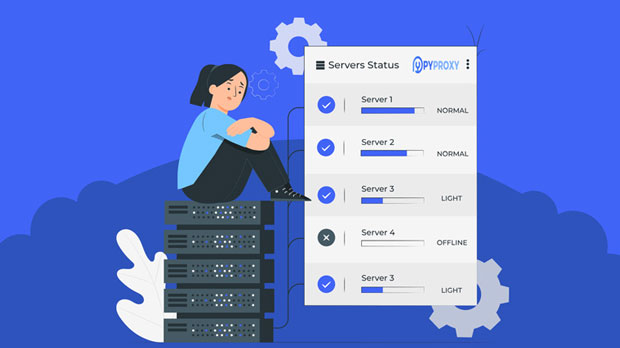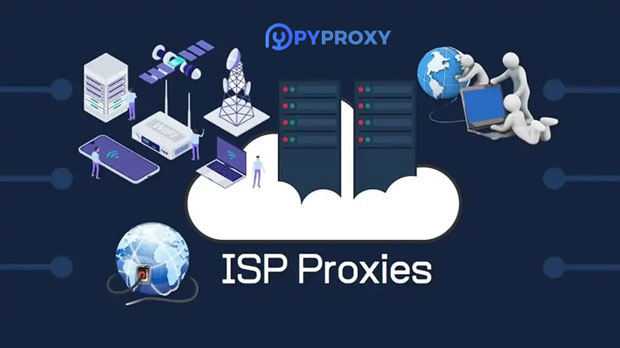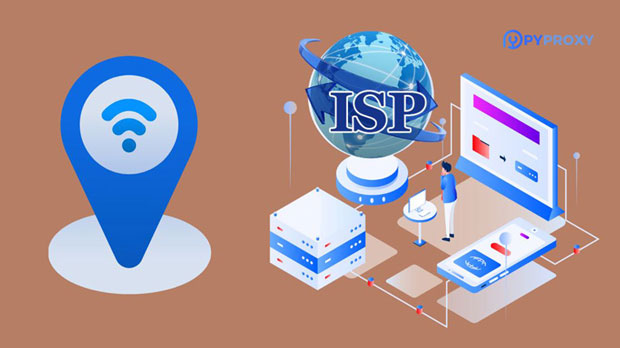How do I assess the diversity and quality of the proxy pool when purchasing PYProxy proxies?
When purchasing proxies, especially from services like PYPROXY, one of the most crucial factors to consider is the diversity and quality of the proxy pool. A high-quality proxy pool can provide you with consistent, fast, and anonymous browsing, while a diverse proxy pool helps you maintain anonymity and avoid detection, which is crucial for web scraping, bypassing geo-restrictions, or conducting data gathering activities. Understanding how to assess these factors will ensure that you make an informed choice, avoid potential issues, and get the best value for your investment. In this article, we will discuss how to evaluate the diversity and quality of proxy pools when purchasing from PYProxy. 1. The Importance of Proxy Pool DiversityOne of the first aspects to consider when evaluating a proxy pool is its diversity. A diverse proxy pool offers a range of IP addresses from various regions, ISPs, and types of proxies (residential, data center, mobile). Diversity ensures that your online activities are less likely to be flagged or blocked by websites. This is especially important for activities like web scraping or accessing region-specific content.- Geographical Diversity: A pool of proxies with global coverage ensures that you can access content from different countries and regions. Websites often restrict or serve different content based on geographic location, so having proxies from various locations allows you to bypass such geo-blocks. A diverse pool reduces the chances of detection, as it mimics normal browsing patterns of users worldwide.- ISP and Provider Variety: Proxy pools with a broad range of ISPs and providers make it harder for websites to recognize and block your proxy requests. For instance, residential proxies from different ISPs are generally harder to detect than those from a single provider. The more providers included in the proxy pool, the better the chance of avoiding detection.- Proxy Types: When choosing a proxy pool, it's essential to consider the type of proxies available. Residential proxies are considered more legitimate by websites because they originate from real user devices, while data center proxies can sometimes be flagged because they originate from a centralized location. Mobile proxies, on the other hand, are increasingly being used for specific tasks. A diverse pool includes multiple types, providing flexibility in different scenarios.2. Quality of Proxies: Speed, Reliability, and AnonymityWhile diversity is essential, the quality of proxies in the pool is equally important. A high-quality proxy pool will not only offer geographical diversity but will also provide proxies that are fast, reliable, and anonymous. Here’s how to assess proxy quality:- Speed and Latency: Proxy speed is one of the most critical factors in choosing a provider. Slow proxies can result in timeouts, delays, and failed requests, which can disrupt your operations. To assess speed, you can check for the provider’s average latency times or run a few tests to see how well the proxies perform in real-life conditions. Low latency is especially crucial for tasks like web scraping, where time-sensitive data retrieval is necessary.- Reliability: A good proxy pool should offer high uptime, with minimal outages. Frequent downtime or slow response times can hinder your tasks, especially if you rely on the proxies for long-term projects. Check the provider’s service-level agreement (SLA) or uptime guarantee to determine how reliable the proxies are. Additionally, inquire about how often the proxies are refreshed or rotated to avoid exhaustion or being blacklisted.- Anonymity and Security: For privacy-sensitive tasks, ensuring that the proxies offer anonymity is a must. High-quality proxy services offer anonymity levels that make it hard for websites to track the source of your traffic. Proxies that provide a high degree of anonymity (such as elite or high-anonymity proxies) ensure that your real IP address is not exposed.- Rotation and IP Pool Size: The larger the proxy pool, the better the chances of avoiding detection. Proxies in a pool that rotate frequently or offer randomization features help mask your actions, making it difficult for websites to identify patterns or block your requests. A provider with a vast and rotating IP pool is ideal for maintaining anonymity and reducing the risk of IP bans.3. The Role of Proxy Authentication MethodsAnother key consideration when assessing the quality of a proxy pool is the authentication method used. Most proxy services provide two main types of authentication: IP-based and username/password-based.- IP Authentication: This method ties access to the proxy to specific IP addresses. While this may be convenient for users with a fixed location or dedicated server, it may limit flexibility when accessing proxies from different locations or networks. - Username and Password Authentication: This method allows for more flexibility, as it doesn’t rely on a fixed IP. It allows users to connect to the proxy pool from any location, which is ideal for operations requiring multiple access points or for users who need proxies from different regions.Both methods have their advantages, so choosing the right authentication type depends on your use case and security needs. For high-security tasks, username/password authentication is often preferred as it adds an extra layer of protection.4. Evaluating Customer Support and ServiceWhen purchasing proxies, it’s essential to consider the level of customer support the provider offers. Quality customer support can be a game-changer when issues arise, especially if you’re using proxies for mission-critical tasks. Look for a provider that offers 24/7 support through multiple channels (live chat, email, or phone) to address any concerns in a timely manner. Additionally, consider the provider's reputation and reviews. A service with positive customer feedback and testimonials is more likely to offer a quality product. Ask about their response time, technical expertise, and willingness to resolve any issues, as this can impact your overall experience.5. Pricing and ScalabilityWhile it might be tempting to go for the cheapest option, remember that quality and reliability are often worth the investment. Cheap proxies might come with limited features, poor speed, and higher risk of being blocked or blacklisted. Look for a pricing structure that aligns with your needs and budget while still offering the level of service you require.Also, consider scalability. As your business or project grows, your proxy needs may change. Ensure that the proxy service can accommodate your growing requirements, whether it’s by providing more proxies, faster speeds, or more flexible pricing.ConclusionWhen purchasing proxies from PYProxy or any other provider, evaluating the diversity and quality of the proxy pool is essential for making an informed decision. A diverse pool of proxies with global coverage, various types, and multiple ISPs will allow you to bypass restrictions and maintain anonymity. At the same time, ensure that the proxies offer good speed, reliability, and security to support your online activities. Additionally, consider proxy authentication methods, customer support, and pricing to ensure that the service meets your long-term needs. By taking these factors into account, you’ll be able to find the best proxy pool for your specific requirements, helping you avoid issues and optimize your browsing experience.
2025-02-25

























































